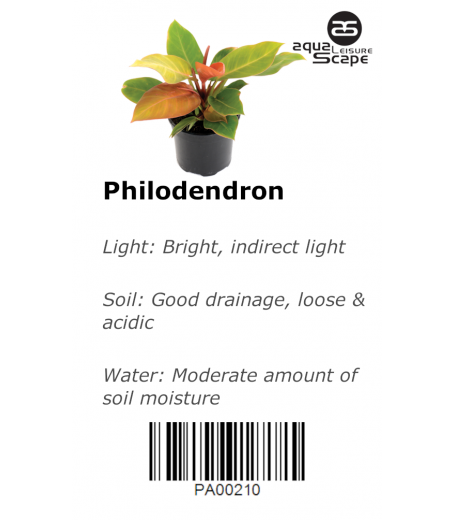PHILODENDRO
- RM35.00
The Philodendron genus contains hundreds of species of beautiful foliage plants. With their large, green, and glossy leaves, they are excellent for adding a bit of their native tropical flair to your home. These popular houseplants are known for their easy care.
There are two types of philodendrons to choose from: vining and non-climbing. The vining varieties grow several feet, usually requiring some support structure to climb on. Non-climbing varieties grow upright. In general, philodendrons have a fast growth rate.
| Common Name | Philodendron |
| Botanical Name | Philodendron spp. |
| Family | Araceae |
| Plant Type | Perennial |
| Mature Size | 6-72 in. tall, 6-36 in. wide |
| Sun Exposure | Partial |
| Soil Type | Loamy, well-drained |
| Soil pH | Acidic |
| Hardiness Zones | 9–11 (USDA) |
| Native Area | Central America, South America |
| Toxicity | Toxic to humans and pets12 |
Light
Philodendrons need sun, but they would naturally receive dappled light under a tropical canopy rather than direct light. Set them up by a window that gets bright, indirect light. Too little light results in leggy growth with lots of space in between the leaves, but too much light burns their delicate leaves.
Soil
Philodendrons like loose, acidic potting mix that’s rich in organic matter. The soil must have good drainage.
The plants are sensitive to salts that accumulate in the soil via watering. This may result in leaf browning and yellowing. Periodically flush out some of the salts by watering your container thoroughly until water comes out of its drainage holes.
Water
Water this plant whenever the top inch of soil has dried out. Philodendrons generally like a moderate amount of soil moisture. Both overwatering and underwatering may cause the leaves to droop, so gauge when it’s time to water by the soil dryness rather than the leaves. Philodendrons don’t do well sitting in soggy soil, as this leads to root rot.
The non-climbing varieties tend to tolerate dry conditions slightly better than the vining species. Reduce your watering schedule during the winter dormancy.
Temperature and Humidity
The temperature tolerance of philodendrons varies based on the species. In general, they should not be exposed to temperatures below 55 degrees F. Protect them from cool drafts, such as those from an air-conditioning vent. These plants like humidity, so mimic their natural tropical environment by boosting humidity around them. Mist the plant every few days with water from a spray bottle. Alternatively, place the container on a tray of pebbles filled with water, ensuring that the bottom of the container isn't touching the water.
Fertilizer
Use a balanced liquid fertilizer monthly on your plant in the spring and summer. Follow the product label instructions to use the correct amount, and reduce feeding to every six to eight weeks in the fall and winter. If your plant isn’t getting enough food, its growth will be slower than normal, and its leaves might appear smaller than usual.
Reviews
There are no reviews for this product.



